Do you have a question about the Brother TD-4100N and is the answer not in the manual?
Provides a general overview of the Brother printer's network capabilities and setup.
Details the basic network functions offered by the Brother TD-4100N.
Explains the two primary types of network connections: Peer-to-Peer and Network Shared.
Covers the TCP/IP protocols and functionalities supported by the Brother print server.
Outlines the necessary TCP/IP settings configuration for network printing.
Explains the concepts of IP addresses, subnet masks, and gateways for network setup.
Guides users on how to set IP addresses and subnet masks using BRAdmin Light.
Refers to alternative methods for configuring the network printer, including advanced options.
Describes how to modify existing print server settings using BRAdmin Light or a web browser.
Instructs on how to print the network settings page for verification and reference.
Introduces the process of setting up peer-to-peer printing using TCP/IP.
Details the steps for configuring a standard TCP/IP port for network printing.
Provides instructions for installing the printer driver when it's not already present.
Explains how to configure network printing when the driver is already installed.
Directs users to additional resources for network printing information.
Describes the Driver Deployment Wizard for automating printer driver installations.
Introduces common network printing problems and their solutions.
Addresses common issues like the computer not finding the printer or connection problems.
Solves issues related to the setup of network print software or drivers.
Provides solutions for issues where print jobs are not processed or result in errors.
Offers troubleshooting steps for specific network protocols, including web browser issues.
Covers any remaining troubleshooting topics not categorized elsewhere.
Explains the services provided by the Brother print server for network access.
Details alternative methods for IP address configuration for advanced users.
Describes how to use DHCP for automatic IP address allocation.
Explains the BOOTP protocol for IP address configuration.
Describes the Reverse ARP (RARP) method for IP address configuration.
Explains the Automatic Private IP Addressing (APIPA) protocol for IP configuration.
Details how to use the ARP command for IP address configuration.
Guides on using Telnet for manual IP address configuration.
Explains how to configure IP address using Web BRAdmin server software.
Lists the technical specifications of the Brother print server.
Outlines the system requirements for computers connecting to the printer.
Describes the available management utilities like BRAdmin Light and Professional.
Provides remarks and details regarding open-source software licensing.
Contains specific statements related to the OpenSSL license.
Provides a general overview of the Brother printer's network capabilities and setup.
Details the basic network functions offered by the Brother TD-4100N.
Explains the two primary types of network connections: Peer-to-Peer and Network Shared.
Covers the TCP/IP protocols and functionalities supported by the Brother print server.
Outlines the necessary TCP/IP settings configuration for network printing.
Explains the concepts of IP addresses, subnet masks, and gateways for network setup.
Guides users on how to set IP addresses and subnet masks using BRAdmin Light.
Refers to alternative methods for configuring the network printer, including advanced options.
Describes how to modify existing print server settings using BRAdmin Light or a web browser.
Instructs on how to print the network settings page for verification and reference.
Introduces the process of setting up peer-to-peer printing using TCP/IP.
Details the steps for configuring a standard TCP/IP port for network printing.
Provides instructions for installing the printer driver when it's not already present.
Explains how to configure network printing when the driver is already installed.
Directs users to additional resources for network printing information.
Describes the Driver Deployment Wizard for automating printer driver installations.
Introduces common network printing problems and their solutions.
Addresses common issues like the computer not finding the printer or connection problems.
Solves issues related to the setup of network print software or drivers.
Provides solutions for issues where print jobs are not processed or result in errors.
Offers troubleshooting steps for specific network protocols, including web browser issues.
Covers any remaining troubleshooting topics not categorized elsewhere.
Explains the services provided by the Brother print server for network access.
Details alternative methods for IP address configuration for advanced users.
Describes how to use DHCP for automatic IP address allocation.
Explains the BOOTP protocol for IP address configuration.
Describes the Reverse ARP (RARP) method for IP address configuration.
Explains the Automatic Private IP Addressing (APIPA) protocol for IP configuration.
Details how to use the ARP command for IP address configuration.
Guides on using Telnet for manual IP address configuration.
Explains how to configure IP address using Web BRAdmin server software.
Lists the technical specifications of the Brother print server.
Outlines the system requirements for computers connecting to the printer.
Describes the available management utilities like BRAdmin Light and Professional.
Provides remarks and details regarding open-source software licensing.
Contains specific statements related to the OpenSSL license.
| Print technology | Direct thermal |
|---|---|
| Vertical printing | Yes |
| Maximum resolution | 300 x 300 DPI |
| Label type | RD |
| Dimensions (WxDxH) | 173 x 229 x 158 mm |
| Standard interfaces | USB 2.0, Ethernet |
| Tape cutting | Automatic |
| Internal memory | 2 MB |
| Number of fonts | 5 |
| Number of styles | 7 |
| Built-in barcodes | Codabar (NW-7), EAN13, EAN8, Maxicode, Postnet, QR Code, UPC-A, UPC-E |
| Power requirements | 220-240VAC, 50/60 Hz, 1.8A |
| Minimum RAM | 128 MB |
| Mac compatibility | No |
| Minimum storage drive space | 70 MB |
| Compatible operating systems | Windows XP/7, Windows Vista, Windows Server 2003/2008 |
| Bundled software | P-touch PT-Editor 5.0, Transfer Manager 2.1, Transfer Express, Library 2.1 |
| Media thickness | 0.076 - 0.153/0.178 mm |
| Maximum label width | 102 mm |
| Maximum label length | 3 m |
| Maximum roll diameter | 101.6 mm |
| Product color | Gray |
| Operating temperature (T-T) | 10 - 35 °C |
| Operating relative humidity (H-H) | 20 - 80 % |
| Harmonized System (HS) code | 84433210 |
| Depth | 229 mm |
|---|---|
| Width | 173 mm |
| Height | 158 mm |
| Weight | 1830 g |


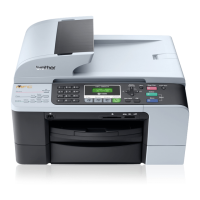
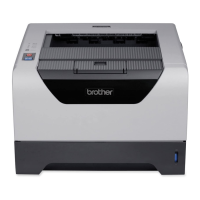

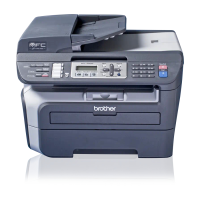
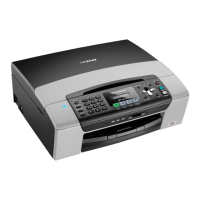
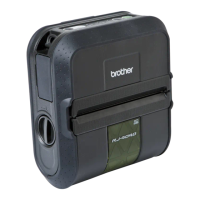



